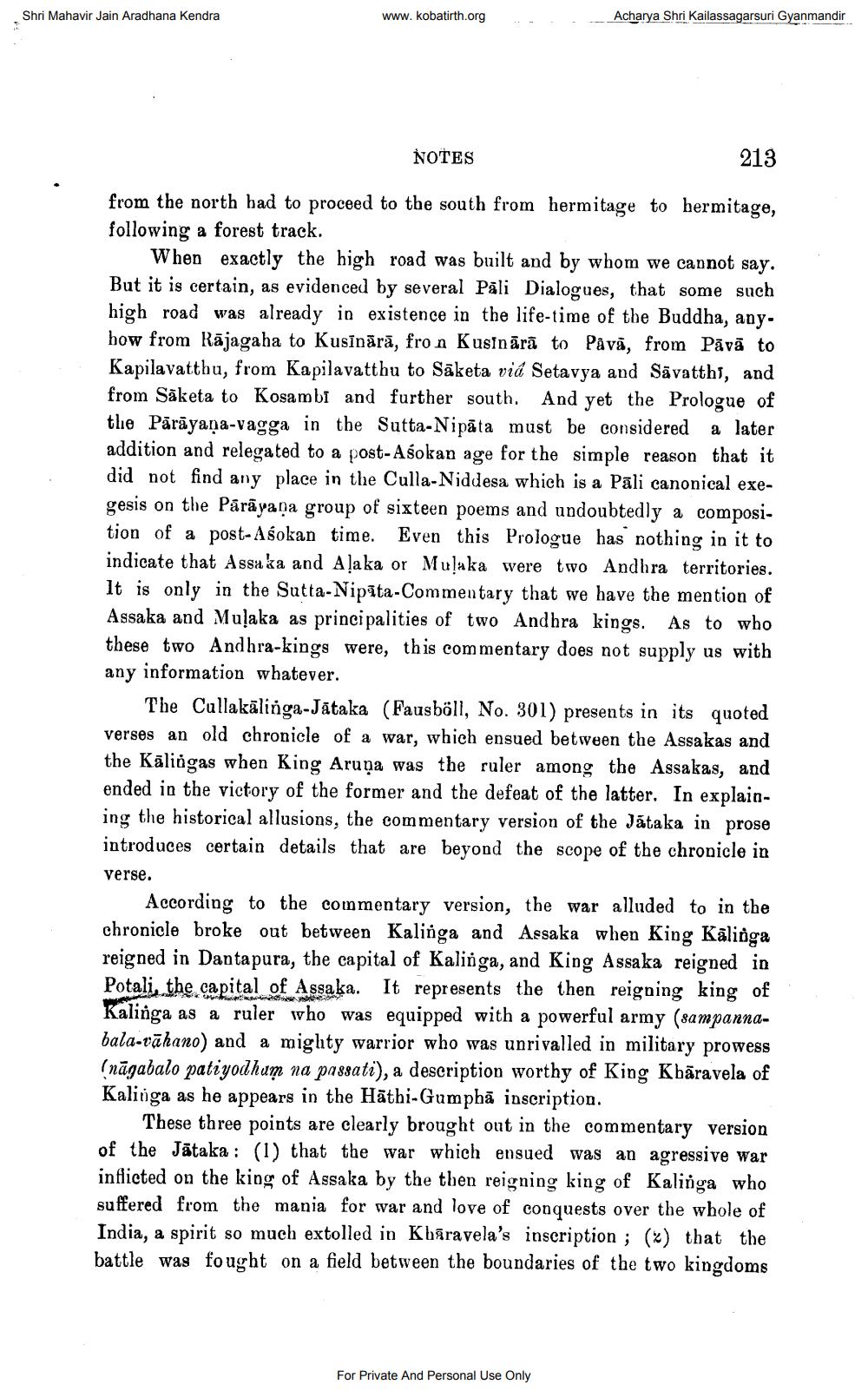________________
Shri Mahavir Jain Aradhana Kendra
www.kobatirth.org
Acharya Shri Kailassagarsuri Gyanmandir
NOTES
213
from the north had to proceed to the south from hermitage to hermitage, following a forest track.
When exactly the high road was built and by whom we cannot say. But it is certain, as evidenced by several Pāli Dialogues, that some such high road was already in existence in the life-time of the Buddha, any. how from Rājagaha to Kusīnārā, fron Kusinārā to Pāvā, from Pāvā to Kapilavatthu, from Kapilavatthu to Säketa vid Setavya and Sāvatthi, and from Säketa to Kosambi and further south. And yet the Prologue of the Pārāyana-vagga in the Sutta-Nipāta must be considered a later addition and relegated to a post-Asokan age for the simple reason that it did not find any place in the Culla-Niddesa which is a Pali canonical exegesis on the Pārāyaṇa group of sixteen poems and undoubtedly a composition of a post-Asokan time. Even this Prologue has nothing in it to indicate that Assaka and Aļaka or Mulaka were two Andhra territories. It is only in the Sutta-Nipāta-Commentary that we have the mention of Assaka and Muļaka as principalities of two Andhra kings. As to who these two Andhra-kings were, this commentary does not supply us with any information whatever.
The Cullakālinga-Jätaka (Fausböll, No. 301) presents in its quoted verses an old chronicle of a war, which ensued between the Assakas and the Kāliigas when King Aruņa was the ruler among the Assakas, and ended in the victory of the former and the defeat of the latter. In explaining the historical allusions, the commentary version of the Játaka in prose introduces certain details that are beyond the scope of the chronicle in verse.
According to the commentary version, the war alluded to in the chronicle broke out between Kalinga and Assaka when King Kālióga reigned in Dantapura, the capital of Kalinga, and King Assaka reigned in Potali, the capital of Assaka. It represents the then reigning king of Kalinga as a ruler who was equipped with a powerful army (sampannabala-vāhano) and a mighty warrior who was unrivalled in military prowess (nāgabalo patiyodhum na passati), a description worthy of King Kbāravela of Kalinga as he appears in the Hāthi-Gumphā inscription.
These three points are clearly brought out in the commentary version of the Jātaka : (1) that the war which ensued was an agressive war inflicted on the king of Assaka by the then reigning king of Kalinga who suffered from the mania for war and love of conquests over the whole of India, a spirit so much extolled in Khāravela's inscription ; (2) that the battle was fought on a field between the boundaries of the two kingdoms
For Private And Personal Use Only




